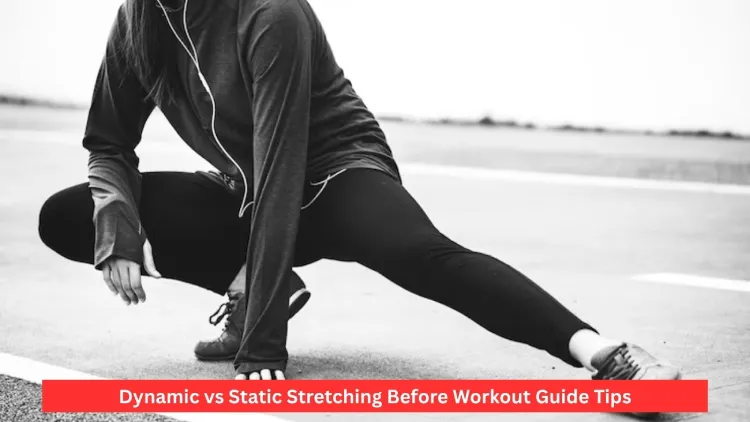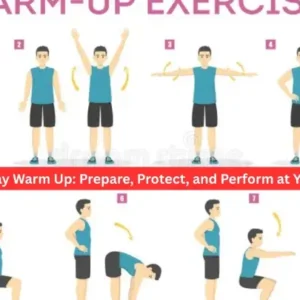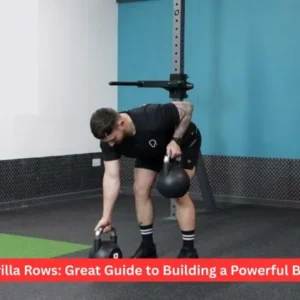The topic of Dynamic vs Static Stretching Before Workout is a critical issue that needs the attention of sportspeople and individuals who intend to engage in exercise. Although the two stretching modalities are similar in that they both aim at improving flexibility and decreasing the risk of injury, they are different in terms of when to use them, the technique involved and the physiological effects.
While dynamic and static stretching may seem straightforward, there is much more to these types of stretching, their science, and the benefits of implementing them into your training program. In this ultimate guide, we are going to cover dynamic stretching and static stretching in detail, the science behind each type, and give some real-life routines that you can use in your training program.
Your muscles, joints, and central nervous system require warming up before you can get straight into the essence of your exercise session. The role of stretching in such preparation is enormous, and not every stretch can be replaced by another. Dynamic stretching is an active movement that increases muscle temperature and neural activation, but static stretching is holding a static position to elongate muscle fibres and enhance flexibility in the long term. Learning the differences between them and how to use them will enable you to create more efficient warm-up and cool-down routines, perform your best and reduce the risk of injury.
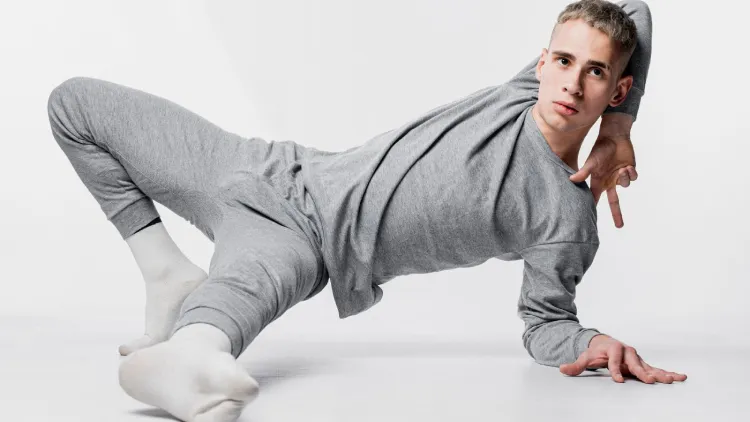
Physiological Foundations
The key to stretching has everything to do with what happens to your body on a biomechanical and neurological level:
- Muscle Temperature and Elasticity: Dynamic actions raise muscle temperature, which makes them more elastic, and enzyme activity is facilitated to produce economy of movements. Performed after a workout or in isolation, static stretching is deemed to assist in lengthening of muscle-tendon units, bringing changes to their viscoelastic properties in the long run.
- Neuromuscular Activation: Dynamic stretches enhance proprioception and excitability of the motor neurons, which act on coordination and muscle recruitment. Conversely, static stretching just before high-intensity performances may temporarily lower the firing rates of motor units and decrease explosive strength.
- Circulatory and Hormonal Changes: Light dynamic routines initiate a small amount of adrenaline discharge and enhance the blood circulation, which supplies active tissues with oxygen and nutrients. Static stretching has a role in activation of the parasympathetic system, leading to relaxation and assisting in the elimination of metabolic waste products in the recovery process.
With this understanding of the physiological responses, you can make the most of your warm-up, get the most out of your performance and aid in the process of recovery.
What Is Dynamic Stretching?
Dynamic stretching is a series of controlled, rhythmic movements which joints and muscles through a complete range of motion. Dynamic exercises are not held passive, but done with purposeful movement, and often in the same pattern as your next exercise.
Advantages of Dynamic Stretching
- Increased Power Production: Dynamic stretches enhance the recruitment of the muscle fibres and consequent increase in the power production, speed and agility.
- Injury Mitigation: A progressive warm-up of the muscles and other tissues before weight lifting exercise lessens the likelihood of sprains and strains.
- Increased Blood Circulation: Guarantees a supply of oxygen and nutrients to muscles due to an increase in heartbeats and blood flow.
- Neuromuscular Coordination: Enhances the connection between the central nervous system and muscle groups, therefore enhancing movement.
- Mental Preparedness: Enables one to snap out of relaxation mode and acquire the focus and confidence necessary in exercising.
Common Dynamic Stretching Exercises
- Leg Swings: Forward/backwards and side-to-side leg swings are hip flexor, hamstring, and adductor mobilisations.
- Arm Circles: Forward and backwards, big and small circles enable the shoulder stabilisers.
- Walking lunges: Lunge forward, then twist the torso to involve the core and hip rotators.
- High Knees: March or jog in place, lifting knees to waist height to warm up hip flexors and core.
- Butt Kicks: Run where heels hit glutes to emphasis hamstrings and lower leg blood flow.
Recommended Routine: Performing 2-3 sets of 10-15 repetitions per exercise takes around 8-10 minutes, which can be done before the main workout.
What Is Static Stretching?
Static stretching is done by holding a muscle at its maximum comfortable length for 15 to 60 seconds. This technique focuses on minimal movement and maintenance of tension to help relax the muscle as well as improve flexibility over time.
Benefits of Static Stretching
- Greater Flexibility: A consistent practice of static stretching causes an elongation of the muscle fibres and an increase in the range of movement at the joints after several weeks and months.
- Muscle Relaxation: Reduces the effects of tension by stimulating the parasympathetic nervous system, which assists an individual to overcome the impacts of stress.
- Recovery Enhancement: Assists with the removal of metabolic waste products and thus minimises delayed-onset muscle soreness (DOMS).
- Long-Term Mobility: Ideal in long-term mobility, especially when it comes to deep flexibility in yoga, dance, and gymnastics.
Common Static Stretching Exercises
- Hamstring Stretch: Sit with legs straight and reach your toes, keeping your back straight by hinging at the hips.
- Quadriceps Stretch: Stand on one leg and grab the ankle of the opposite leg and pull it towards your glutes, making sure that the knees are in line.
- Calf Stretch: Stand up against the wall with one foot in front of the other (backwards), and push down with the back heel.
- Butterfly Stretch: Sit and bring the feet together and hold the soles and press the knees down towards the floor.
- Triceps Stretch: Keeping one arm straight, have the elbow point above your head. On the other hand, seize the elbow and pull slightly toward your head.
Best Practice: Perform static stretches during your cool down after training or during separate flexibility sessions 2 to 3 times a week.
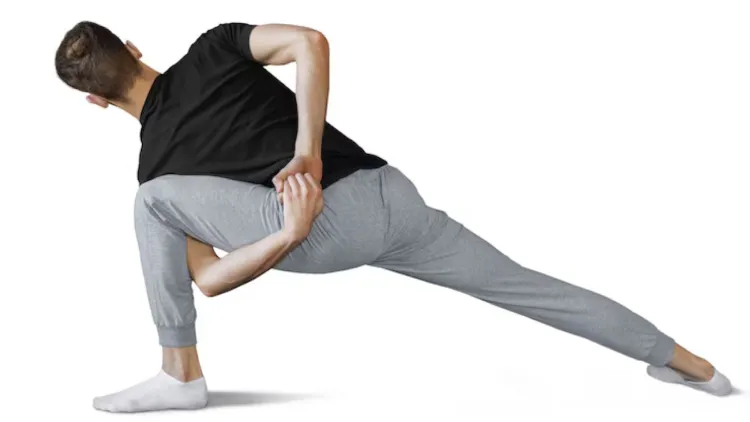
Key Contrasts: Dynamic vs Static Stretching Before Workout
| Aspect | Dynamic Stretching | Static Stretching |
| Movement | Active, movement-based | Stationary, held |
| Primary Purpose | Warm-up | Cool-down/Recovery |
| Impact on Performance | Enhances power, speed, and agility | May temporarily reduce peak strength |
| Neural Effects | Increases motor unit excitability | May decrease motor neuron firing |
| Duration | 5–10 minutes | 5–10 minutes |
| Frequency | Every workout | Post-workout or separate flexibility |
| Ideal For | Sports, HIIT, functional movements | Flexibility-focused disciplines |
Understanding these contrasts ensures you apply the right technique at the right time for maximum benefit.
Research Highlights
- A 2013 literature review in the Scandinavian Journal of Medicine & Science in Sports determined that dynamic stretching increased sprint velocity and vertical leap by 2 to 5 per cent. Static routines, in the same report, showed an advantage, at most a trivial gain, at least a small loss of power.
- An entire season trial with college athletes indicated that athletes who dynamically warmed up experienced 30 per cent fewer musculoskeletal injuries in comparison with their static stretch peers.
- A different set of weekly tests revealed that spending the post-practice period on static stretching increased hamstring reach by 10 to 15 per cent over eight weeks of regular practice.
- These findings outline a two-track approach: employ dynamic moves when wanting explosive performances and save static holds to develop flexibility further.
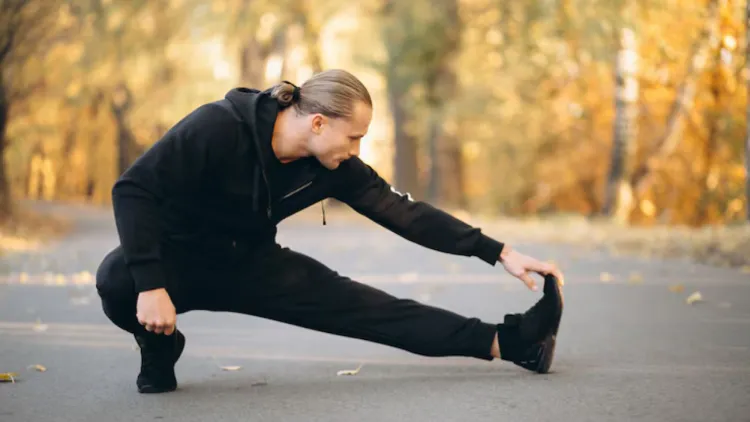
Conclusion
Learning the difference between dynamic vs static stretching before a workout will take your fitness routine to the next level. Use dynamic stretching in all warm-ups to wake up muscles, enhance circulation and improve performance.
Be followed by static stretching during your cool-down to increase flexibility, aid in recovery, and improve joint health. With the smart use of both methods, you’ll reduce the risk of injury, maximise the effectiveness of your workouts, and get long-term results in terms of becoming fit.
Frequently Asked Questions
Is it possible to combine dynamic and static stretching within the same session?
Absolutely. Dynamic stretches are best used before a workout to increase performance, and static stretches after the workout to aid recovery and flexibility.
How frequently ought I to stretch outside of workouts statically?
To achieve noticeable changes in the range of motion, try to incorporate 2-3 specific flexibility sessions into your week, with each session taking 10-15 minutes.
Can foam rolling replace stretching?
Foam rolling is used to resolve myofascial restrictions and enhance the quality of tissues, but should not be a substitute for active warm-ups and flexibility training.
Does dynamic stretching eliminate muscle soreness?
Dynamic movements have the potential to alleviate mild soreness due to their ability to increase circulation and facilitate nutrient delivery; however, they are not a panacea to DOMS.

